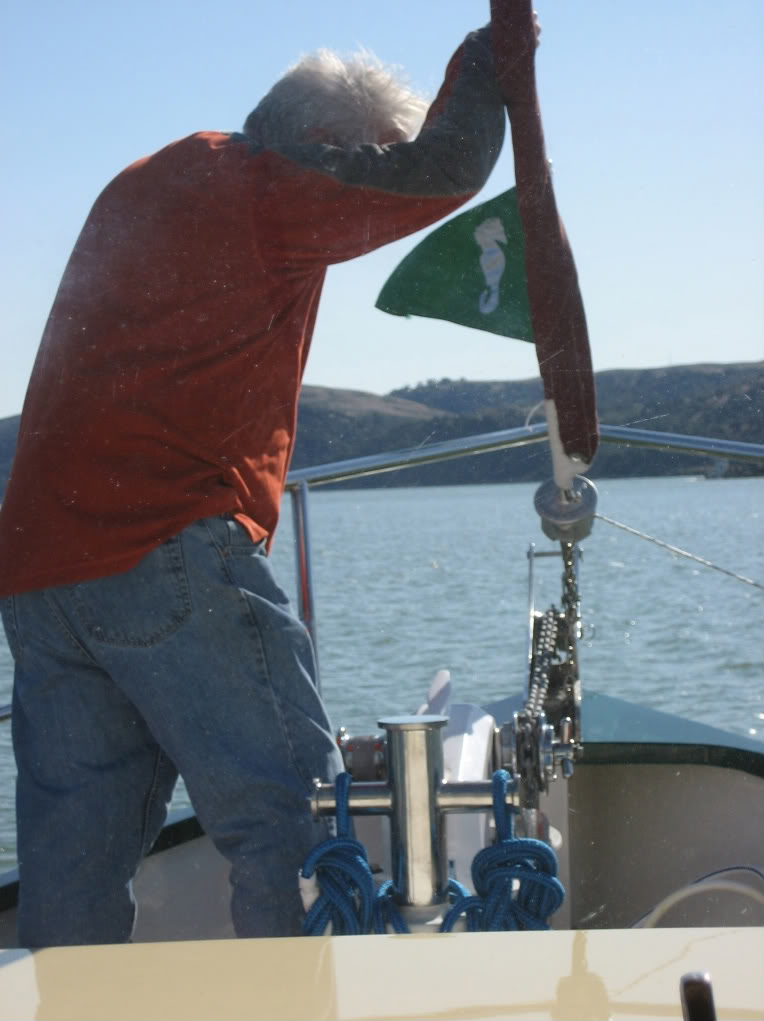Jim Gandee
Veteran Member
Fleet,
For those of you who use an anchor bouy how do you rig and deploy it?
Thanks,
Jim
For those of you who use an anchor bouy how do you rig and deploy it?
Thanks,
Jim
A little more equipment to dump in the water, however, if it gives you peace-of-mind, why not. You know within 20' or so where the hook is.
Last summer while anchored in a Gulf Island cove (Canada) a sailboat entered and laid across my anchor. If I'd of had a bouy it could have prevented that incident. As an aside, I'd like to use the bouy line as a retrieval line in case of a struck anchor. Thoughts, ideas?
The logic is to fasten it to the head end of the anchor so if the anchor catches on tree stumps, rocks, etc., you can retrieve it and not have to cut the rode and lose the anchor.I never use one when anchoring in the PNW with chain and a heavy anchor. I fail to see the logic, even when anchoring in shallow East Coast locations unless the rode and anchor are very light. .............
The logic is to fasten it to the head end of the anchor so if the anchor catches on tree stumps, rocks, etc., you can retrieve it and not have to cut the rode and lose the anchor. .
No more anchor buoy for me.
The last time I used one I woke up and discovered the boat had dragged several hundred feet. Sometime during the night the boat drifted over the buoy and it snagged on one of the prop shafts. Now dragging the anchor around backwards, and I was reluctant to use the motors since there is a line wrapped up.
The water was fairly warm so I dove and freed the shafts.
All chain rode now with no anchor buoy attached.

No more anchor buoy for me.
The last time I used one I woke up and discovered the boat had dragged several hundred feet. Sometime during the night the boat drifted over the buoy and it snagged on one of the prop shafts. Now dragging the anchor around backwards, and I was reluctant to use the motors since there is a line wrapped up.
The water was fairly warm so I dove and freed the shafts.
All chain rode now with no anchor buoy attached.
Most all of my anchors are inexpensive and I've not yet had one stuck. But I have used a small buoy and a trip line. Don't bother unless I'm in an anchorage that is known for logging debris or similar. And then I use my very inexpensive Claw anchor.
Read FF's post closely, his method virtually eliminates that possibility.
You'll also lose part of the rode. If it's all chain you'll need a way to cut it or you'll have tu dump the entire length. If it's rope/chai you'll lose the chain part and have to buy new chain and try to find someone to splice it. My anchor cost only $100 but the rode cost $300........... Am purchasing a new anchor from Hopkins Carter tomorrow and frankly if I lose it-I lose it. I'll just order another new one. .
Folks that run the AICW find many of the nicest anchorages are either up a small creek , or in an area that is submerged woodlands.
Either is greatly assisted by a trip line, as even our Hyd windlass balks at lifting tree stumps..
